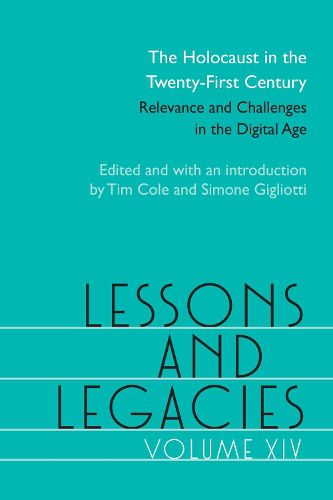Readings Newsletter
Become a Readings Member to make your shopping experience even easier.
Sign in or sign up for free!
You’re not far away from qualifying for FREE standard shipping within Australia
You’ve qualified for FREE standard shipping within Australia
The cart is loading…






The Holocaust in the Twenty-First Century: Relevance and Challenges in the Digital Age challenges a number of key themes in Holocaust studies with new research. Essays in the section Tropes Reconsidered reevaluate foundational concepts such as Primo Levi’s gray zone and idea of the muselmann. The chapters in Survival Strategies and Obstructions use digital methodologies to examine mobility and space and their relationship to hiding, resistance, and emigration. Contributors to the final section, Digital Methods, Digital Memory, offer critical reflections on the utility of digital methods in scholarly, pedagogic, and public engagement with the Holocaust.Although the chapters differ markedly in their embrace or eschewal of digital methods, they share several themes: a preoccupation with the experiences of persecution, escape, and resistance at different scales (individual, group, and systemic); methodological innovation through the adoption and tracking of micro- and mezzohistories of movement and displacement; varied approaches to the practice of Saul FriedlAEnder’s integrated history ; the mainstreaming of oral history; and the robust application of micro- and macrolevel approaches to the geographies of the Holocaust. Taken together, these chapters incorporate gender analysis, spatial thinking, and victim agency into Holocaust studies. In so doing, they move beyond existing notions of perpetrators, victims, and bystanders to portray the Holocaust as a complex and multilayered event.
$9.00 standard shipping within Australia
FREE standard shipping within Australia for orders over $100.00
Express & International shipping calculated at checkout
The Holocaust in the Twenty-First Century: Relevance and Challenges in the Digital Age challenges a number of key themes in Holocaust studies with new research. Essays in the section Tropes Reconsidered reevaluate foundational concepts such as Primo Levi’s gray zone and idea of the muselmann. The chapters in Survival Strategies and Obstructions use digital methodologies to examine mobility and space and their relationship to hiding, resistance, and emigration. Contributors to the final section, Digital Methods, Digital Memory, offer critical reflections on the utility of digital methods in scholarly, pedagogic, and public engagement with the Holocaust.Although the chapters differ markedly in their embrace or eschewal of digital methods, they share several themes: a preoccupation with the experiences of persecution, escape, and resistance at different scales (individual, group, and systemic); methodological innovation through the adoption and tracking of micro- and mezzohistories of movement and displacement; varied approaches to the practice of Saul FriedlAEnder’s integrated history ; the mainstreaming of oral history; and the robust application of micro- and macrolevel approaches to the geographies of the Holocaust. Taken together, these chapters incorporate gender analysis, spatial thinking, and victim agency into Holocaust studies. In so doing, they move beyond existing notions of perpetrators, victims, and bystanders to portray the Holocaust as a complex and multilayered event.